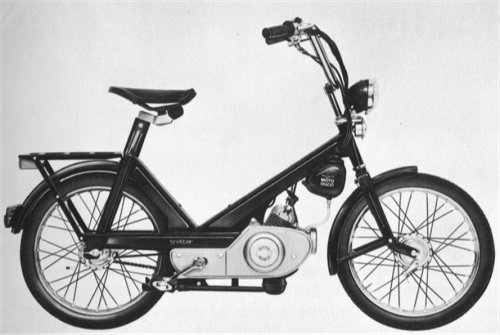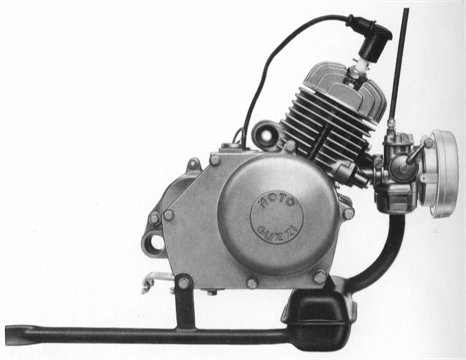
Moto Guzzi Trotter
Story :
The Trotter first entered the world in 1966, during the delicate transitional phase between Parodi and SEIMM ownership. Very simple and very cheap (54,000 lire) the Trotter was an instant success, so much so that it made an important contribution to the company's succesful bid to restore its flagging fortunes. At the end of 1967, the original model with the completely unsprung frame and automatic friction clutch, plus a special ratio for gradients, was joined by the Trotter VIP (painted in livelier colours) and the Super, which had telescopic front forks. The Trotter was subjected to major modifications at the end of 1969, when the 49 cc cylinder barrel was laid on its side and linked to a V belt primary drive. Changes were also made to the frame. This resulted in four new versions of the moped: the Special 1 (later known as the Special M) a single-speed automatic with leading link front forks: the Special 2 (later baptized the Special V) which had the staples transmission powered by a V-belt drive: the Mark 1 (later the Mark M) singlespeed, with girder forks at the front and swinging arm rear suspension: finally there was the Mark 2 (later the Mark V) with the Mark 1 frame and the staples transmission. The four versions remained in production until 1973. Later the Trotter is given the name Chiú.

The original Trotter from 1966 had a sober black livery which was a perfect match for the spartan lines of the pressed steel frame. Nevertheless this was the first production Guzzi available in different colours. At the end of 1969 the trotters painted in brilliant colours were known as VIP's : they cost 1.800 lire more than the basic model.

The first Trotter engine with the inclined cylinder (40,8 cc),
automatic centrifugal clutch and selectable low gear option for steep gradients.
It was fixed to the frame with a silentbloc mounting